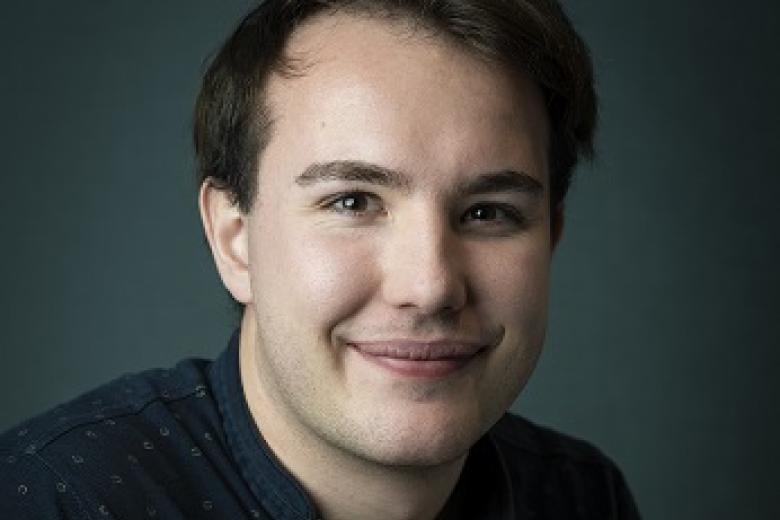Chemotherapy less effective in patients with weight loss in pancreatic cancer
Interview with Merel Rosemarie Aberle on her PhD thesis
Pancreatic cancer is one of the most deadly cancers: only two in 10 people survive the first five years after diagnosis. In the search for a better treatment, researchers have so far mainly focused on teasing out characteristics of tumour cells. Merel Aberle, affiliated with research institute NUTRIM and the Department of Surgery at Maastricht UMC+, shows that it is important to also look at the patient. For instance, she found that chemotherapy is less effective in patients with low fat and muscle mass - which applies to a large majority of pancreatic cancer patients. Aberle will receive her PhD on this research on 16 November.
People with pancreatic cancer can lose severe weight in a short period of time, losing up to 10 kilos of fat and muscle. This weight loss is called cachexia, and occurs in 80% of pancreatic cancer patients. Most patients undergo chemotherapy, but especially those with cachexia live shorter lives. A reason for physician-researcher Merel Aberle to investigate whether cachexia is related to the effectiveness of chemotherapy. Chemotherapy for patients with pancreatic cancer generally consists of a combination of three different drugs, supplemented by two other drugs if the first combination fails.
Weight versus muscle mass
Aberle studied how patients' body composition (fat and muscle mass) changed during chemotherapy treatment. She found that patients with low muscle mass in particular suffered more side effects and weakened further. This creates a vicious cycle, as the oncologist therefore lowers the dose of chemotherapy for the patient, which can cause the tumour to not be treated properly.
While these results in themselves are not immediately hopeful for pancreatic cancer patients, they offer valuable insights for clinical practice. For example, it is common practice to tailor the dosage of chemotherapy to the patient's body weight. But because loss of muscle mass is associated with side effects, Aberle recommends adjusting the dose based on muscle mass rather than the patient's weight. By doing so, serious side effects such as nausea, vomiting and pain in the fingers and feet (neuropathy) can potentially be reduced.
Quest for better treatment
The results also contribute to an ongoing debate in the medical community about the cause and management of cachexia and the treatment of patients suffering from it, Aberle says. "On the one hand, there are researchers who argue that cachexia is caused by the tumour, so that treatment of the tumour should also resolve the cachexia. On the other hand, doctors see patients who are so weakened by cachexia that they cannot cope with chemotherapy, or become very ill from the side effects. Our research gives an answer to both sides: if you don't treat the cachexia you can't treat the tumour properly either, and if you don't treat the tumour properly then the cachexia won't go away either."
But Aberle did not leave it at that. She then wanted to find out which chemotherapy for patients with cachexia works best to best treat the tumour and hence the cachexia. To do so, she tested the five most commonly used drugs on organoids. Organoids are mini-tumours made in the laboratory from tumour cells from patients whose tumours have been surgically removed. Aberle found evidence that the chemotherapies that are now standard practice do not work as well for people with cachexia. In several studies, Aberle tested how best to conduct research with organoids to contribute to personalised treatment.
PhD defence Merel Rosemarie Aberle, Thursday 16 November 2023 13 hrs.
“Shifting perspectives from tumor to patient. Combining patient and tumor phenotyping to predict response and personalize treatment in pancreatic cancer”
Supervisors: Prof. dr. S.W.M. Olde Damink, Prof. dr. F.J. van Schooten
Co- Supervisors: Dr. S. S. Rensen, Dr. R. M. van Dam
Also read
-
Measuring the true impact of Epilepsy
Epilepsy is a condition that extends far beyond its visible symptoms, affecting the daily lives, well-being, and financial stability of patients and their caregivers. For Darin Elabbasy, PhD student at CAPHRI (VHC), understanding these broader impacts is at the heart of her work.

-
“Nice to meet you” NUTRIM PhD Julien Luyten
Beating the odds: Julien Luyten’ s path to rare bile duct cancer research. Insight story from a NUTRIM PhD and chair of the NUTRIM PhD council.

-
NUTRIM Reflections 2024-2025
Read the NUTRIM Special Holiday Edition Newsletter with the highlights of 2024
